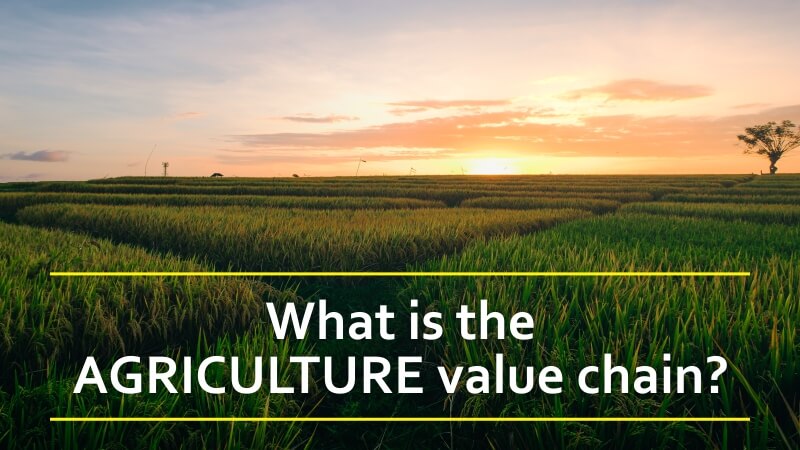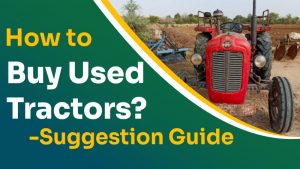Introduction:
A total agricultural product is produced in the field, moved via a series of actors and activities, and finally consumed this is known as the agriculture value chain. The product gains value at every stage of the process. An agriculture value chain might involve processing, packaging, storage, transport, and distribution and can be a vertical linking system or a network of several separate corporate groups.
The full range of products and services required for an agricultural product to go from the farm to the final consumer is typically referred to as the “value chain.” The whole range of value-adding activities necessary to move a good or service through the many stages of production, including acquiring raw materials and other inputs, are described in the World Bank’s definition of the term “value chain.”
A critical question about the future viability of value generation is being raised by recent trends. Extreme weather variability, rising food demand, large agricultural production gaps with peers in the region, and the need to control food prices and import pulses to satisfy demand, and all of these factors have shown that India needs to reconsider its strategy.
How we are connected to the agriculture value chain?
As producers, consumers of goods and services, processors, merchants, financial providers, etc., we are all involved in value chains in some capacity. We are all consumers who buy food and clothing, and as a result, we are connected to numerous value chains, including those involving grain crops, roots and tubers, fruits and vegetables, legumes, oils, and textiles. From the producers to our kitchens, dining tables, apparel, and beyond, these networks extend.
The producers, or the farmers who grow crops and raise animals, are at one end of the agricultural value chain. The final users of the products are the consumers who ingest, consume, wear, and use them. Numerous thousands of men and women, as well as small and major organizations, are situated in the middle. Each individual and company completes a single little task and contributes value along the way by developing, purchasing, selling, processing, shipping, storing, packaging and checking, etc.
Difference between Traditional and Modern value chains:
Traditional agricultural value chains are typically controlled by spot market exchanges involving numerous small retailers and producers.
Modern Agriculture value chain: Vertical coordination, supply base consolidation, agro-industrial processing, and standard use are traits of contemporary value chains.
Finance Agriculture value chain:
Agricultural value chain finance is concerned with the flows of money into and along a value chain in order to satisfy the financial demands of chain actors, ensure sales, purchase inputs or output, or boost productivity. Analyzing the possibilities for value chain financing requires a comprehensive view of the chain, the people involved, and how they are connected. These connections allow money to move along the chain. For instance, inputs could be given to farmers and paid for directly when the output is delivered, eliminating the need for farmers to obtain a loan from a bank or other financial institution. Under contract agricultural agreements, this is typical.
Product financing via trader and input supplier credit, as well as credit provided by a marketing company or a lead firm, are examples of value chain financing types. Other trade finance tools include factoring, in which a company sells its accounts receivable at a discount, and receivables financing, in which the bank advances monies in exchange for an assignment of future receivables from the buyer. Property collateralization, like that based on warehouse receipts, and risk mitigation, including forwarding contracts, futures, and insurance, are also included under value chain finance.
Who benefits from the value chain?
As the product flows from the beginning of the chain to the consumer, every participant adds value to the chain. Each participant receives an economic rent for bringing this value to the system. That is the primary advantage or motivator for joining a value chain.
The people who stand to gain the most from value chains are those who are entrepreneurial, open to dialogue with others along the value chain, and who have the means-both material and financial-and know-how-to create new markets or compete more successfully in those that already exist.
It may be more difficult for farmers to gain from a value chain if they have limited land, live farther away from markets, have fewer resources, face language difficulties, lack irrigation, or aren’t a part of strong farmer organizations.
Chain Vision:
Farmers need to adopt a “chain vision” in order to collaborate with other value chain participants. This indicates that they view their value chains as a network of specialized businesses dependent upon one another for profit.
Farmers should respect the other parts of the chain and recognize that they have legitimate interests as well. The many parts in the chain should be aware of the need of working together rather than competing. They should be aware that while buyers and sellers will always have to oppose interests-a in high prices and low prices, respectively-they also share a common interest in the welfare of the customer.
Both the buyer’s and the seller’s businesses will expand if the customer is happy. Every link in a value chain needs to get something and feel treated properly for it to be effective.
Facilitating Environments:
Creating the ideal climate for agriculture and making investments in rural public amenities appear to be prerequisites for effective value chain development, as they do for any agricultural expansion. A stable macroeconomic climate, controlled inflation, exchange rates based on market fundamentals rather than government distribution of foreign currency, predictable taxation that is invested in public goods, property rights, and peace and order are all indicators of an enabling environment. Agriculture growth is positively correlated with investments in irrigation, transportation infrastructure, and other technology. Essential products and services, infrastructure, like rural roads, and agricultural research and extension are all the responsibility of the government.
The development of value chains is frequently delayed by corruption, both at the highest levels and at the common roadblocks present in many nations, particularly in Africa. It might be challenging to achieve the collaboration between the many ministries that is necessary for many actions to strengthen value chains.
To get the latest updates on the tractor, tractor price, and tractor news install the KhetiGaadi application.




